One of the places I visit most in New York City is The MET. The MET (nickname of the Metropolitan Museum of Art) has its main facility on 5th Avenue and contains one of the greatest collections of art and artifacts in the world, but further up the island – the Munsee Lenape called it manaháhtaan – is the MET’s satellite museum, The Cloisters.
The founding of the Cloisters was a partnership among sculptor/collector George Grey Barnard, John D. Rockefeller Jr. (son of the founder of Standard Oil), the Metropolitan Museum, and other well-heeled New Yorkers.
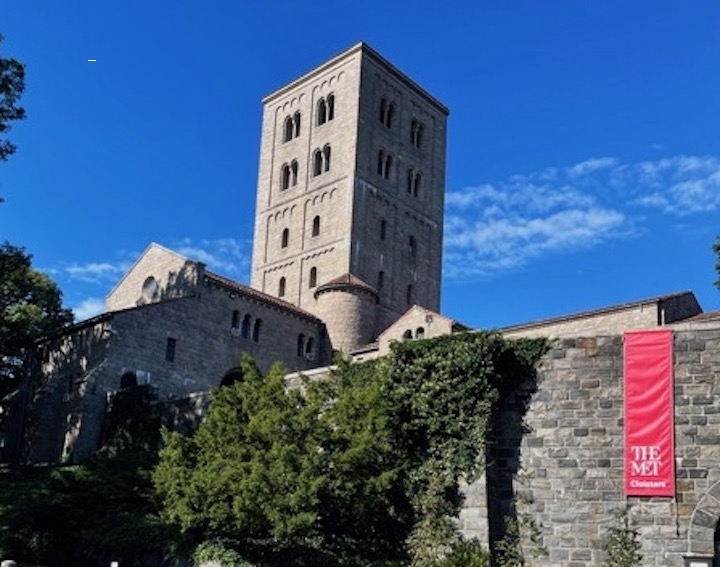
Barnard was a fine sculptor but not financially successful – he had money troubles most of his life – so while living in France he began acquiring and selling medieval antiquities, including whole architectural structures, eventually shipping much of it to his home in upper Manhattan, establishing there his own small museum.
Most significantly, Barnard acquired substantial sections of four abandoned cloisters from French monasteries sundered by radicals during the French Revolution. Today they form key parts of the museum.
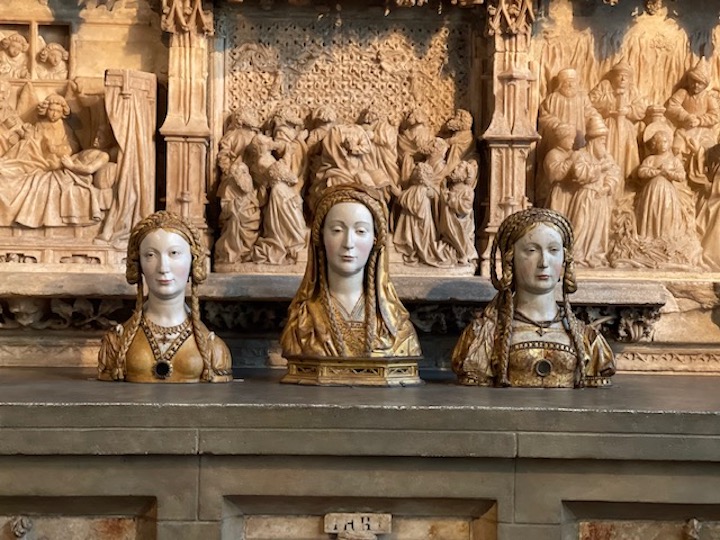
Rockefeller bought Barnard’s collection in 1925 for the current equivalent of $11 million, probably ending the sculptor’s financial woes.
The financier then bought the estate of another industrialist and hired landscape architect Frederick Law Olmsted Jr. (his father had designed Central Park) to create a green space in Washington Heights that became known as Fort Tryon Park. With the agreement of the MET, construction began on the Cloisters in the 1930s, with a larger surrounding building designed by architect Charles Collens. It opened on May 10, 1938, and featured Barnard’s collection as well as other medieval art donated by wealthy collectors, most notably J.P. Morgan, the world’s richest man.
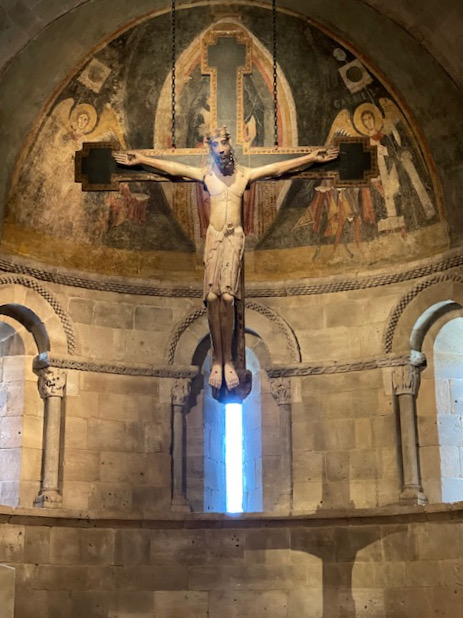
Four speeches were delivered that day: Rockefeller spoke, of course, as did George Blumenthal, the MET’s chief, Mayor Fiorello LaGuardia, and Robert Moses, Parks Commissioner. Mr. Rockefeller, an Ohioan by birth, spoke of beauty as “one of the spiritual and inspirational forces of life. . .”
The Rockefellers were Baptists, yet they lavished money on Catholic art. John D. Sr. even funded a restoration of Rheims Cathedral in France.
My wife and I visited the Cloisters last Friday, ostensibly to view an exhibit titled “Spain, 1000-1200: Art at the Frontiers of Faith,” which will run through January 2022.
In writing The Compleat Gentleman, I submerged (nearly to drowning) in the medieval world, even acquiring and listening to the period’s music, which included Gregorian chant, songs of the troubadours, and a remarkable album called The Sacred Bridge: Jews and Christians in Medieval Europe by the Boston Camerata, which demonstrated how two separated communities (three if you include Muslims) managed to share musical connections of faith, as in the interweaving of verses from Psalm 114 in both Gregorian and Ashkenazic chant.
A similar aesthetic is at work in the Cloisters show. But we breezed through “Spain” and spent the rest of our time wandering through the extraordinary museum we love so much (a happy activity of twice or more a year for us), marveling at the glories of medieval art, and pausing in its several open-air cloisters and gardens.
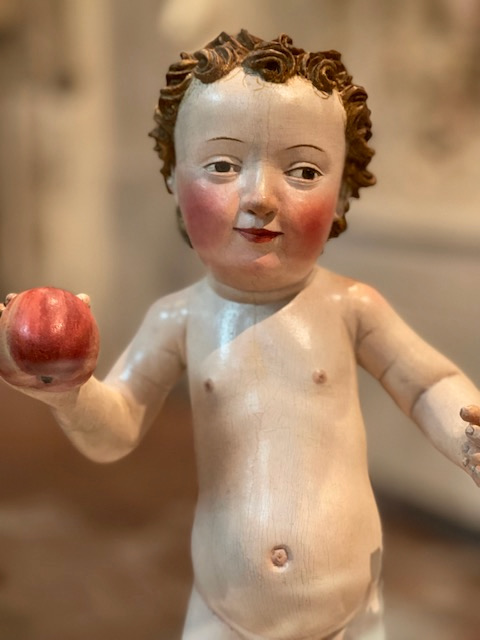
The Cloisters features two of the most noteworthy MET holdings: the Annunciation Triptych (aka the Merode Altarpiece, 1427-32) by the workshop of Robert Campion; and the most famous of all unicorn tapestries, The Unicorn Rests in a Garden (1495-1505). I’ve linked to those images at the MET website, rather than post here the shots I took on my smartphone, because – good as my iPhone 12 Pro Max is – I was unable to do justice to those two great objets d’art.
Much medieval art is chockablock with symbolism and “reading” either of those two great works may require a docent: human, printed, or electronic. In this last category, Bloomberg Connects is superb. Visit the website at https://www.bloombergconnects.org, scan the QR code, and load the app to your smartphone. You’ll be connected gratis to ever-expanding commentaries about cultural institutions around the world, including the Cloisters.
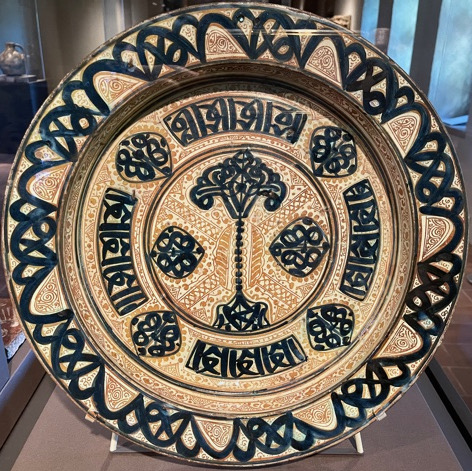
Each image you see in this column is identified below. I have no favorites. Each in its own way is extraordinary, and not just because of that spiritual and inspirational beauty of which Mr. Rockefeller spoke. It’s also a matter of age.
Take the “Deep Dish” (brasero in Spanish), from around 1430.
I stared at it shaking my head. My wife said, “Lovely, isn’t it?”
“Yes. But how many times have I broken a dish in the sink after dinner? This brasero is nearly 600 years old!”
As items at the Cloisters go, that’s “young,” relatively speaking, and it’s astonishing to think how such glories have endured through the centuries.
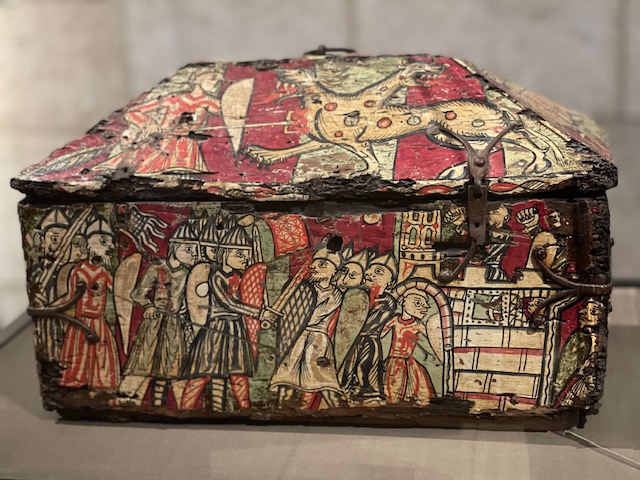
My late mother had a wealthy friend, a collector of great taste and means (though no Morgan or Rockefeller), and he once showed me one of his more delicate prizes – even put it in my hands.
“It’s a vase,” I said, and he nodded. “Where’s it from?”
“It’s a funerary vessel from Egypt.”
“Really! How old.”
“Best estimate: 2500 years.”
He’d found it in an antiques store (in Ohio or Pennsylvania, I don’t recall which) and had bought it for a few hundred dollars.
“How on earth did it get from ancient Egypt to here in such perfect condition?”
He hadn’t a clue. And he didn’t care.
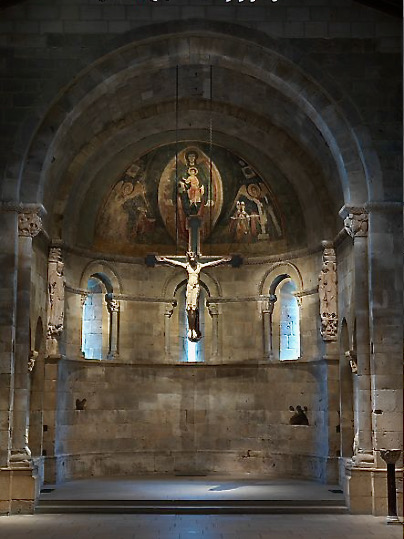
The Cloisters is an overwhelmingly Catholic experience (and, to a lesser extent, Jewish and Muslim) and reminds me of one reason why I became a Catholic: beauty. And to my mind, nobody ever put it better than Bob Royal in his inaugural column for this website:
The Catholic thing – the concrete historical reality of Catholicism – is the richest cultural tradition in the world. It was born from Judaism and, through that spiritual parentage, even reaches back into the great ancient civilizations of Egypt and Mesopotamia. . . . Despite its all-too-human imperfections, there is simply nothing like it.
_____
Images (all photos by the author):
- Reliquary Busts of Female Saints, c. 1520-30 [possibly Brussels]
- Crucifix, c. 1150-1200 [Northern Spain]
- Christ Child with an Apple by Michel Erhart workshop, c. 1470-80 [Swabia]
- Deep Dish (Brasero), c. 1430 [Spain]. Motif is al-afiya, Arabic for “health”
- Coffret, c. 1220-25 [Southern France]
- Apse from Church of San Martín at Fuentidueña, c. 1175–1200 [Spain]















